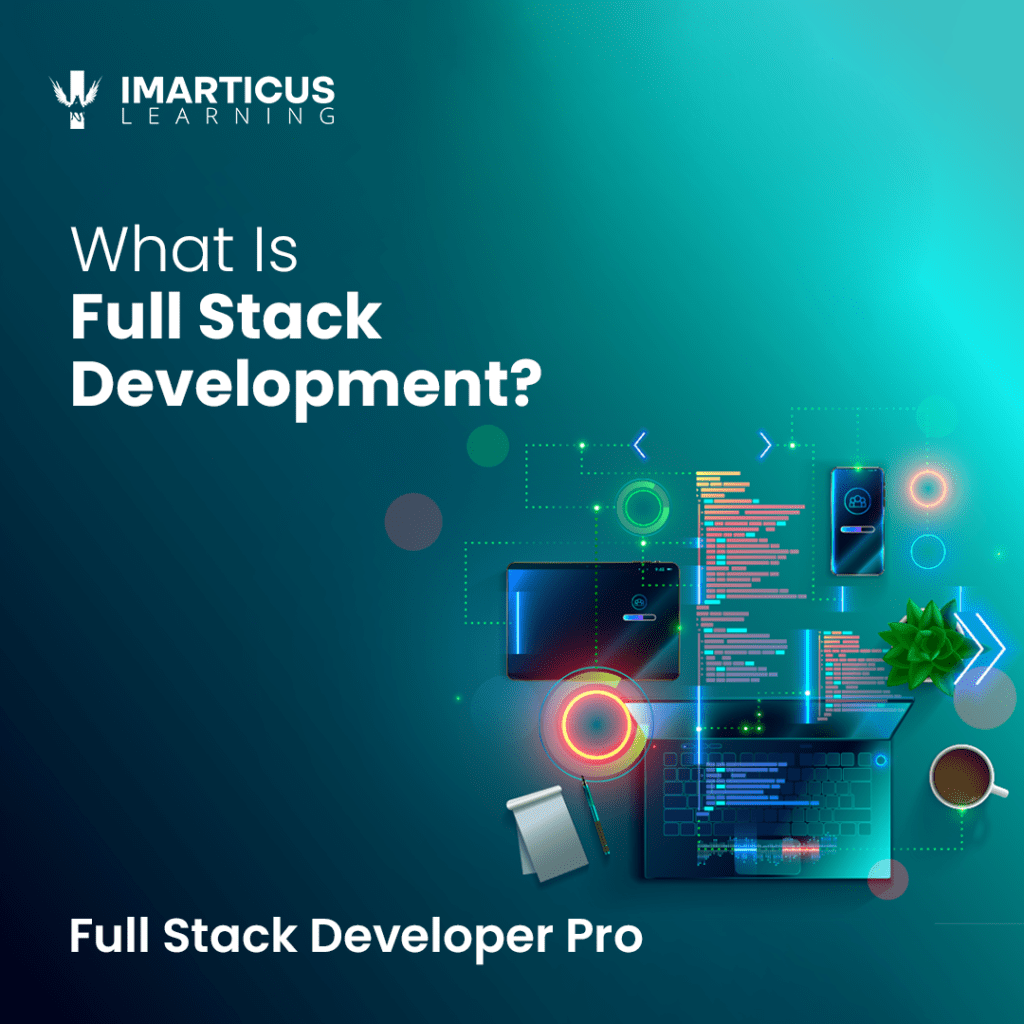Data structure and algorithms form the core of full-stack development and full-stack web development. As a high-engagement software development activity, it structures both ends of a software application. It handles front-end jobs like user interaction, processing information received from there, and business logic. The total package wraps up the essence of smoothly running an application.
So how exactly does full-stack development work? It is the integration of different languages and technologies to seep into every layer of the application or website to make it efficient. This is a skill in high demand as most businesses are turning towards digital platforms.
What is full-stack development?
It is imperative to understand full-stack development to comprehend the role of data structure and algorithms. A web application is operated through two ends, the front and back. Full stack development provides end-to-end operation in its entirety. The word ‘stack’ in full stack development refers to the layers that build up a software application.
Full-stack developers handle both ends collectively using a set of languages for achieving a fully functioning website. Languages like JavaScript, Java, Python and HTML are popular choices for full-stack development. It is not mandatory to abide by a certain set of programming languages to achieve optimum results as all programming languages are compatible during the process.
Components of full-stack development
The primary parts of a software application or website that concerns its functioning are the front-end and back-end. While designing the front end is primarily a user-interface-driven job, the back end processes the data input from the front end and carries out necessary operations.
Front end development
Any application or website is driven by data input. That is exactly what front-end development deals in. The platform is designed to be user-friendly that efficiently carries out its task. Front-end development operations include web designing, user interface and structuring the application.
Data collected from the front end is transferred to the back end which carries out its complex processing and security. JavaScript and HTML are preferred for creating the exterior of a web application to make it more appealing and interactive.
Back end development
Back-end development deals with all things that extend beyond the surface. This stack is the core of the web application. The job of a back-end developer is to look into the storage and security of the data along with the logistics to ensure fluid operation. After front-end data collection, back-end operations take over.
Programming languages like Python and Java are popular choices for back-end development.
Ways in which data structure and algorithm make a difference
Any business that deals with a large amount of data cannot afford to make an uninformed decision. Data structure and algorithm add to problem-solving capacity for dealing with an overwhelming amount of data that requires processing. Data-intensive applications benefit most from the knowledge of data structure and algorithms in the back-end processes.
The use of data structure in full-stack development
Data structures are the organisation, storage, processing and access of data. It helps to deal with data efficiently in the back end for better operation. It is an essential skill for back-end developers and front-end developers as well. While it is only a part of data processing, it acts as a stepping stone.
Why does algorithm matter?
An algorithm is code written in a programming language to solve a problem and execute the program. It comprises codes arranged in a specific order that takes input and executes a specific task. An algorithm is a visible tool that is obligatory while writing a program. A good algorithm with a sound knowledge of data structure implies a solid web application.
A key to becoming a better full-stack developer
The utility of DSA in full-stack web development cannot be denied under any circumstances. A full-stack web developer with a strong grasp of DSA undoubtedly has an edge over a regular web developer. With the rapidly progressing technology behind web applications, building a strong foundation in DSA is essential. Without DSA, the stack will crumble and would only leave the shell of a potentially good web application.
Utility of DSA in full-stack development
Data structure and algorithm are useful in ways vital for a full-stack developer. When combined, they help optimise the web application. DSA can provide the following advantages in full-stack development:
- Optimised code selection
- Time efficient
- Memory efficient
Enrolling in a Java full-stack development course can prove to be highly beneficial. Java’s object-oriented approach progresses into a more efficient system that helps to mould the web application to execute the desired function.
Conclusion
Full-stack web development is the future of web development. It is holistic and gives more control over the entirety of the web application. With skills that include data structure and algorithms, creating a stellar web application is a breeze. Learn data structures and algorithms, web development and competitive programming skills at Imarticus with its experienced faculty.
Imarticus Learning offers the best full-stack developer course for aspiring STEM background students and professionals. This six-month live online training in the most popular programming tools like Java, Spring, MongoDB, JavaScript, React, Docker and Jenkins with DSA can give you an edge over the crowd of web developers. By the end of the course, you will build a strong foundation in the data structure, algorithms, web development and Microsoft Excel skills.










